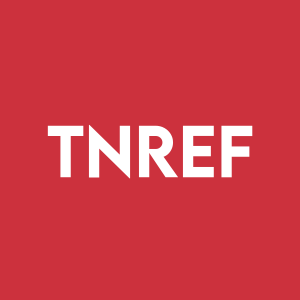Taranis Reports on Drill Testing of the South Magnetotelluric Conductive Tusk Target at Thor
Rhea-AI Summary
Taranis Resources reports on drill testing of the South Magnetotelluric Conductive Tusk Target at its Thor project in British Columbia. The company completed drilling operations targeting the South Tusk, one of two major conductive features identified in a 2022 MT and Magnetic survey. Drill hole Thor-242 reached 576m depth, intersecting a zinc-rich continuation of the Broadview Mine with average values of 38 ppb Au, 8.7 g/t Ag, 0.12% Cu, 0.90% Pb, and 5.10% Zn over 4.73m. Analysis revealed high graphitic carbon content in the black schist unit, explaining the conductive anomaly. The findings suggest the North and South Tusks are related to a large thermal alteration zone underlying the Thor epithermal deposit.
Positive
- Intersection of zinc-rich mineralization with 5.10% Zn over 4.73m
- Successful identification of source of conductivity anomaly
Negative
- Initial drill hole Thor-241 was lost at 105.5m depth
- Follow-up holes Thor-244 and Thor-245 failed to duplicate the mineralization results
- No significant precious or base metal mineralization found in lower parts of Thor-242
ESTES PARK, CO / ACCESSWIRE / November 27, 2024 / Taranis Resources Inc. ("Taranis" or the "Company") (TSX.V:TRO)(OTCQB:TNREF) is providing an update on its Thor project located northeast of Trout Lake, British Columbia.
South and North Tusks
An Expert Geophysics MT and Magnetic survey completed in June of 2022 identified two major conductive features that collectively form an elliptical feature under the Thor epithermal deposit. Although these two features (South and North Tusks) are not exposed at surface, the South Tusk comes closest to surface in the Broadview Mine area where the top of the feature is found 500m below the surface. One of the objectives of the 2024 deep drilling program was to test this conductive feature owing to its large size, and the possibility that it could contain precious and base metals.
South Tusk Target
An initial drill hole (Thor-241) targeted on the South Tusk southeast of the Broadview Mine was lost at a depth of 105.5m, and a second drill hole was collared 60m uphill and was eventually drilled to a depth of 576m where it penetrated the top of the conductivity feature. Although not an objective of this drill hole, Thor-242 unexpectedly intersected a zinc-rich south continuation of the Broadview Mine:
From (m) | To (m) | Au (ppb) | Ag (g/t) | Cu (%) | Pb (%) | Zn (%) |
54.89 | 56.00 | < 5 | 59.4 | 0.04 | 2.26 | 1.77 |
56.00 | 57.00 | < 5 | 0.6 | 0.01 | 0.02 | 0.79 |
57.00 | 58.00 | < 5 | 3.4 | 0.07 | 0.03 | 2.08 |
58.00 | 58.89 | 150 | 5.6 | 0.05 | 0.02 | 5.87 |
58.89 | 59.62 | 45 | 62.0 | 0.57 | 1.90 | 13.60 |
Average over 4.73m | ||||||
54.89 | 59.62 | 38 | 28.7 | 0.12 | 0.90 | 5.10 |
Two subsequent short holes (Thor-244,105m, -450) and Thor-245, 141m, -900) were drilled from the same drill pad as Thor-242 in an attempt to validate the intersection in Thor-242, but both failed to duplicate the results.
Discussion of Hole Thor-242
Thor-242 intersected a succession of intercalated metasedimentary and volcaniclastic rocks throughout the drill hole. At the bottom of the drill hole (516.05-576.00m), the succession changes over into a black schist metasedimentary unit that is characterized by ‘clasts' of pyrite up to 4 cm in size and white-colored altered fragments. This unit (like the metasediments and volcanics above it) has been subjected to intense folding and deformation. Three discrete rock units were quantitatively analyzed for Carbon (graphitic) and Calcite (CaCO3) systematically down the drill hole. Graphite is a conductive mineral and frequently is identified using geophysical methods that measure the conductivity/resistivity of the earth, and its presence particularly in the lower part of the Thor-242 explains the conductive South Tusk anomaly.
Type of Rock | Carbon (Graphite) | CaCO3 (Calcite) | SiO2 |
Metasediments (N=13) | |||
Volcaniclastics (N=11) | |||
Black Schist (Pyrite ‘Bombs') (N=5) |
Drill Hole Thor-242 did not contain appreciable amounts of quartz veining, and it did not contain elevated levels of precious or base metal mineralization in the lower parts of the drill hole in proximity to the South Tusk. Subsequent sampling of other drill holes east of Thor-242 for graphitic carbon in 2024 has shown that the formations under the epithermal deposit and east of the Ripper Fault are essentially devoid of graphitic carbon. The presence of such elevated levels of graphitic carbon in the South Tusk (and probably the North Tusk anomaly) are indicative of sedimentary rocks where organic matter has been converted into graphite by thermal metamorphism, and is a valuable alteration indicator that can be mapped using geophysical surveys that are able to identify elevated levels of conductivity. As such, the North and Sout Tusks are related to a large thermal alteration zone that underlies the Thor epithermal deposit.
About Taranis and Thor
Taranis Resources is a Canadian mineral exploration company. The Thor Project is in southeast British Columbia. Taranis has completed upwards of 250 drill holes, linking all previously known mines into a single, near-surface epithermal deposit that has been recently updated into an NI 43-101 Mineral Resource Estimate (see Taranis News Release dated April 11, 2024). In the summer of 2024, Taranis initiated deep drilling aimed at finding the source of the 2km long epithermal deposit. This exploration uses modern geological models and uses state-of-the-art exploration tools including airborne magnetotellurics, magnetics and geochemistry. The Company's approach is that many of the historic mines in the area are underlain by comparatively large mineral deposits that do not outcrop at surface, and have the potential to become much larger deposits that can be mined using modern mining methods.
Quality Control and Laboratory Methods
All samples for the Thor project were securely delivered to Actlabs in Kamloops, British Columbia. Analytical work was completed both at the Kamloops, and Ancaster, Ontario locations. Actlabs is ISO 17025 accredited. Taranis completed two types of geochemical analysis on the drill core.
The first of these was for major oxide geochemistry and quantitative graphite and carbonate determinations. This sampling was completed systematically on drill holes to determine alteration of rock units. Major oxides and trace elements were determined by lithium metaborate/tetraborate fusion and analysis by Inductively Coupled Plasma ("ICP"), Optical Emission Spectrometry ("OES") and Mass Spectrometry ("MS"). Graphite and Carbonate determinations were made using Infrared ("IR") Spectrometry.
Secondly, visibly (or potentially mineralized sections of core) were systematically sampled after sawing the core in half onsite. Samples were analyzed for 42 elements by 4-Acid Digestion / Inductively Coupled Plasma - Mass Spectrometry ("ICP-MS") and for gold by 30g Fire Assay / Atomic Absorption Spectrophotometry ("AAS")
Where overlimit values were encountered in the analysis of these samples, ‘ore-grade' determinations were made using subsequent ICP analysis and gravimetric methods. As a Quality Control ("QC") measure, Taranis also submitted analytical standards into the sample stream every tenth sample in addition to the laboratory's own quality control methods.
Qualified Person
Exploration activities at Thor were overseen by John Gardiner (P. Geo.), who is a Qualified Person under the meaning of Canadian National Instrument 43-101. John Gardiner is a principal of John J. Gardiner & Associates, LLC which operates in British Columbia under Firm Permit Number 1002256. Mr. Gardiner has reviewed and approved the comments contained within this News Release.
For additional information on Taranis or its
Taranis currently has 100,082,187 shares issued and outstanding (113,827,227 shares on a fully-diluted basis).
TARANIS RESOURCES INC.
Per: John J. Gardiner (P. Geo.), President and CEO
For further information contact:
John J. Gardiner
681 Conifer Lane
Estes Park, Colorado 80517
Phone: (303) 716-5922
Cell: (720) 209-3049
johnjgardiner@earthlink.net
NEITHER THE TSX VENTURE EXCHANGE NOR ITS REGULATION SERVICES PROVIDER (AS THAT TERM IS DEFINED IN THE POLICIES OF THE TSX VENTURE EXCHANGE) ACCEPTS RESPONSIBILITY FOR THE ADEQUACY OR ACCURACY OF THIS NEWS RELEASE.
This News Release may contain forward looking statements based on assumptions and judgments of management regarding future events or results that may prove to be inaccurate as a result of factors beyond its control, and actual results may differ materially from expected results.
SOURCE: Taranis Resources, Inc.
View the original press release on accesswire.com







